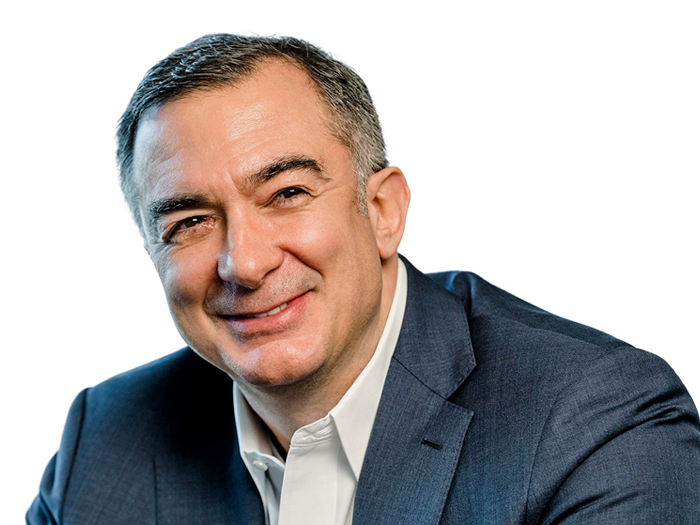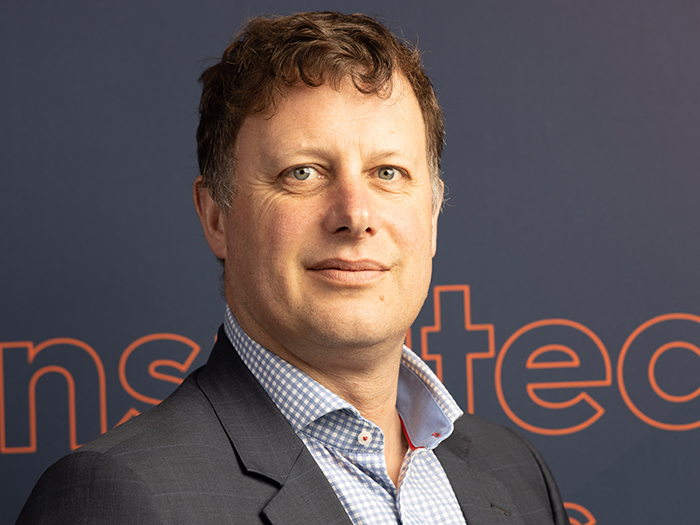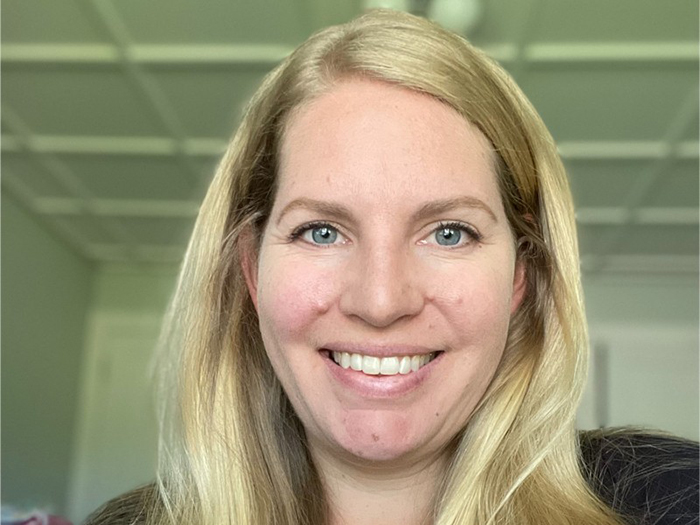9 Questions for Bob Quane, Beazley’s Chief Underwriting Officer

Risk & Insurance recently sat down with Bob Quane, chief underwriting officer at specialty insurer Beazley, to talk about the most important issues affecting underwriters today: the long-term market effects of climate change, the challenges inherent in modeling cyber risk, why the time to look into SRCC coverage is now, and much more.
What follows is a transcript of that conversation, edited for length and clarity.
Risk & Insurance: What’s your primary focus at the moment?
Bob Quane: As the chief underwriting officer at Beazley for the past two and a half years, my primary objective is to ensure that we are underwriting correctly and empowering our underwriters to make good decisions. It’s crucial that we provide our underwriters with the tools to make the best decisions while ensuring that they have the empowerment to react quickly to situations for our clients.
We have four teams that offer all of our products, and those team leaders report to me.
In terms of ceded reinsurance and exposure management, we use both of these tools to ensure we stay within our risk appetite. As we grow our business, which is another important aspect, we must manage our aggregated risk professionally and stay within the company’s risk appetite.
R&I: How is climate change impacting the insurance industry? Do you see your clients taking steps to address its risks?
BQ: We are in an era of accelerated climate change risk, which we believe will continue to evolve. To address this, we are improving our tools to create a more forward-looking view of risk and sharing that with our underwriters. This allows them to understand the impacts of climate risk more deeply and measure it more appropriately, as historical data is becoming less relevant.
Climate change continues to impact all weather perils. U.S. wind continues to remain front-of-mind as a key peril which, while not having a dramatic increase in the expected loss today, is expected to continue to increase as climate risk evolves.
Among secondary perils, wildfire has been one of the most impacted by climate change due to the warming and dryness of different locations, particularly in California, Colorado and other parts of the U.S.
Additionally, we are continuing to monitor the impact of climate change on other secondary perils, including winter storm, flooding and severe convective storm. We are addressing this not only for ourselves but also by collaborating with third parties to understand the impact on our clients’ physical assets over the next 10, 20 or 30 years. We share this information with our clients, first to ensure they are aware of the risks, and second to understand what actions they are taking to mitigate them.
Our clients are becoming increasingly aware of climate risk, but our Risk & Resilience report found that 30% still feel unprepared for this threat. They are eager to better understand the risk and are looking to us, as a specialty carrier, to provide expert advice and help them increase their resilience.
To support our clients, we are collaborating with our reinsurers and enhancing our own tools. We share the data we gather for underwriting with our clients to help them make informed decisions.
Some are considering extreme measures like relocating their facilities to safer locations in the future. Others are taking steps to better protect their assets, such as ensuring proper coverage and reinforcing roofs to withstand severe convective storms.
Clients are also reviewing their insurance policies to ensure they address their current and future needs, especially as coverage may become more expensive or less available following a string of severe catastrophic events.
Some companies are retaining more risk themselves, using captives to insulate against potential long-term insurance cost increases or reduced availability. However, they recognize that they will always need some level of insurance, so they are working to maintain strong, long-term partnerships with the market.
R&I: How reactive should underwriters be to yearly changes in the severity of natural catastrophes?
BQ: Ideally, we’d like to have stable pricing in the long term, which would benefit brokers, clients and insurers alike. But due to market dynamics, we struggle to maintain discipline. When there’s a benign catastrophe season, capacity returns to the market as everyone wants a piece of the action.
Following Hurricane Ian [in September of 2022], many pulled back from the market, likely because they had too much exposure. We kept our powder dry, believing the market wasn’t where it needed to be. In late 2022, we raised capital so that we could lean into this opportunity and grew 85% in the U.S. and 64% globally, which was welcomed by brokers and clients, as most were pulling back.
Climate risk makes property more specialized and underwriting more challenging, which plays to our strengths. While we prefer to maintain stable adequate rates, they increased by 20 to 30% last year and will likely increase between 0 and 5% this year to address some historical rate inadequacies. Future rate changes will depend on the occurrence of significant events.
The uncertainty surrounding climate risk will keep property markets more disciplined than than they have been historically, preventing a pronounced softening. Reinsurers, who significantly influence primary players, have learned their lessons and made corrections last year in terms of rates, attachment points and terms. They won’t easily revert, which will keep primary players in check as well.
R&I: How is data analysis shaping your job, not just in the natural catastrophe space but in general?
BQ: We are constantly seeking new types of data to enhance our understanding. For instance, we are working with a third party to comprehend the impact of climate change on our clients’ physical assets, which is a novel approach that our clients appreciate as we share our insights with them.
Internally, we strive to improve our data to leverage it more effectively. We have a wealth of data, which we augment with industry data from our reinsurance partners, brokers and governmental entities.
We are also working on our tools, particularly leveraging AI to improve our operational efficiency. AI can help us bring together different data in one place, summarize it effectively and guide underwriters to focus on the key areas for the best decision-making.
AI can also be very helpful with our catastrophe models, especially flood models, which traditionally require copious amounts of time to process information. Shifting to AI can address this with impressive speed.
Furthermore, we are exploring machine learning to identify climate change signals and connections between different systems impacted by climate change. We can then feed this information into our scenario analysis, event response and model validation.
R&I: What is Beazley doing to stay competitive when it comes to acquiring new talent, especially in areas like AI and data science where there is a lot of competition?
BQ: At Beazley, we have always been forward-looking in our approach to talent acquisition and retention. Our employees feel cared for, with benefits such as sabbaticals after 10 years of service, and six months of fully paid parental leave regardless of how our employees come to parenthood.
Competitive salaries and a well-structured bonus system are also key factors. Our bonus structure for our underwriters is based on team performance of their relevant product rather than individual or company-wide performance, giving employees a sense of control over their compensation.
Our strong underwriting brand and the empowerment of our underwriters also contribute to job satisfaction. We recently hired several property underwriters who expressed feeling “emancipated” due to the level of empowerment they experienced, allowing them to manage broker expectations better and enjoy their work more.
As AI and data science become increasingly important, we are working to identify the specific skill sets needed and attract the right talent. While we have clarity on who owns AI within the company, there is still a significant amount of build-out required, and we will continue to determine the exact skill sets needed and work to bring them on board.
R&I: What can the insurance industry as a whole do to elevate its profile and attract new graduates?
BQ: Attracting new talent to the insurance industry is a challenge. Despite the rewarding careers that many of us have enjoyed, there’s a persistent reputation of the industry being traditional and dull that’s hard to break.
Even with my own children, who see the exciting opportunities I have, I struggle to win them over to join the insurance industry. However, insurance truly offers great jobs, and those of us in the industry need to do a better job of communicating this to colleges and universities.
We must paint a picture of the incredible opportunities available. Anything the media can do to help us spread the good news would be greatly appreciated!
R&I: What are the key areas where the insurance industry needs to focus more attention and preparation?
BQ: While we’re not necessarily underprepared, there are areas that require more work. Climate change is one such area, as climate risk continues to evolve, and we need to deepen our understanding of it.
Another critical area is systemic exposure associated with cyber risk. The industry needs to strengthen the models we use. Unlike property CAT models, which have been in use for over 30 years and have a century of data to work with, cyber models only have about five to 10 years of data, and its original issue was on data breaches and then later shifted to ransomware.
The challenge with creating a probabilistic model for cyber risk is that it behaves differently from CAT events. A cyber event doesn’t hit the entire world at once; it starts in one spot and slowly spreads, much like a virus. However, it can be fought, just like your body fights a virus. A model that assumes a cyber event hits the entire world simultaneously is not appropriate. Instead, we need a probabilistic model that understands how we can fight this slowly spreading virus, building resilience before it reaches different parts of the world.
Developing such a model is not simple. We need to invest more energy in understanding the impacts, volatility and validation of cyber risk to create mature models similar to those we have for property.
Lastly, AI is another area that requires attention. While AI offers benefits in terms of operational efficiency and potential new products, it also presents systemic exposure or coverage issues. The industry needs to focus on understanding the impact AI will have on loss exposure and its potential to lead to systemic risk, particularly in the context of cyber.
We’re closely monitoring our claims, as they provide us with insights into the trends and issues related to AI. We’re seeing claims arising from privacy issues, improper use and exaggerations of benefits in AI implementation. We’re working on understanding these trends and building risk disaster scenarios to assess the potential impact on our entire book and determine our risk appetite. This may involve addressing the exposure through reinsurance.
As an industry, we’re at the very beginning of understanding AI’s implications, and it’s something we must focus on going forward.
R&I: What are some success stories in the insurance industry that haven’t received the attention they deserve, and what can we learn from them?
BQ: The insurance industry has made significant strides in helping clients become more resilient to cyber threats. By requiring certain measures, such as multifactor authentication, as a condition for underwriting, insurers have encouraged businesses to enhance their cybersecurity. This has benefited not only the insurance industry but the business world as a whole.
Climate risk is another area where insurers are making a positive impact. By dedicating resources to understanding this risk better, we can provide valuable feedback to clients, helping them build resilience against the effects of climate change.
Furthermore, in light of accelerated risks like political uncertainty and tensions on college campuses, we are working to offer coverages that address these concerns. By sharing our knowledge and insights, we aim to provide the necessary protections for our clients in an increasingly volatile environment.
R&I: Is there anything else that’s important for our readers to know about?
BQ: I mentioned political uncertainty. “SRCC” stands for “strikes, riots and civil commotion”; with the upcoming election and tensions on college campuses, we anticipate increased unrest. Our Geopolitical Risk Snapshot found that 32% of business leaders believe political unrest will be the biggest challenge to their business this year, and 25% feel unprepared to address this threat appropriately.
It’s crucial to not wait for riots to hit the streets before addressing SRCC coverage. During the unrest associated with Black Lives Matter and George Floyd four years ago, SRCC coverage was being pulled out of property policies, and stand-alone coverage was becoming scarce.
As a specialist insurer, we offer stand-alone SRCC cover. While many property policies currently include SRCC coverage, high-risk clients such as retail chains, stores, malls, hotels, bars and restaurants may find it excluded. These businesses should contact their brokers immediately to ensure they have proper SRCC coverage in their property policy or explore stand-alone coverage if it’s excluded. Time is of the essence, as insurers may modify their appetite as the election draws nearer. &










